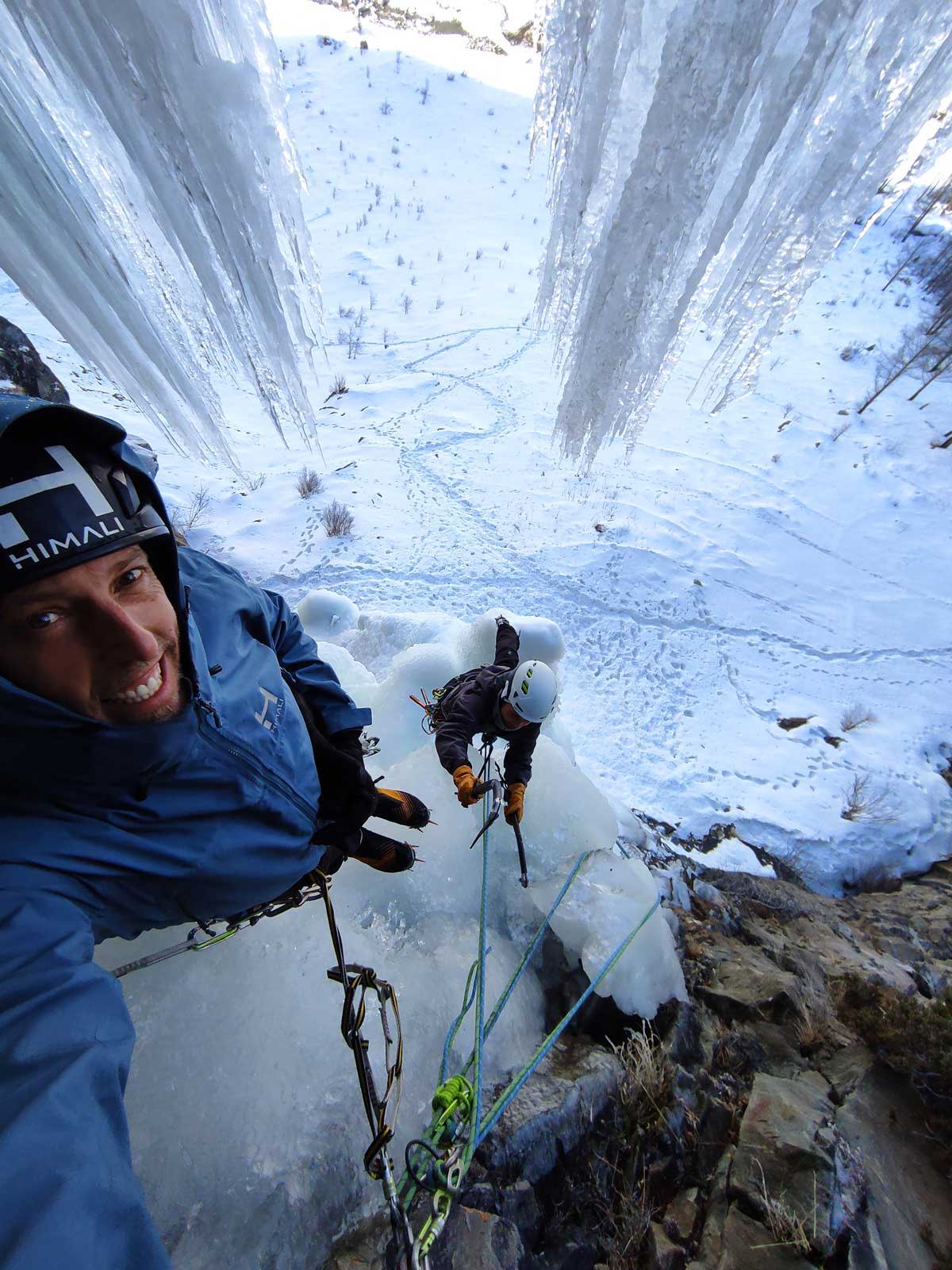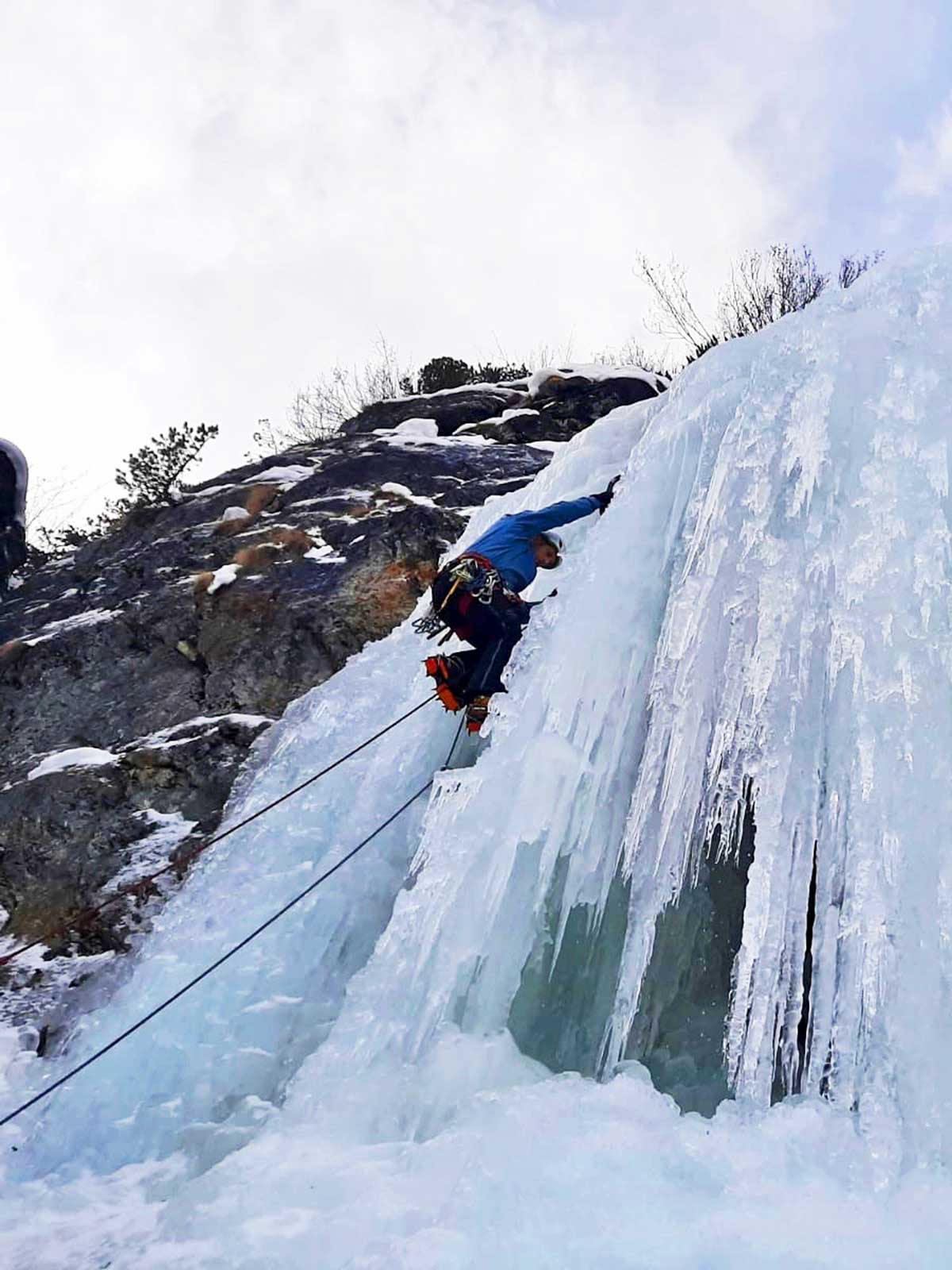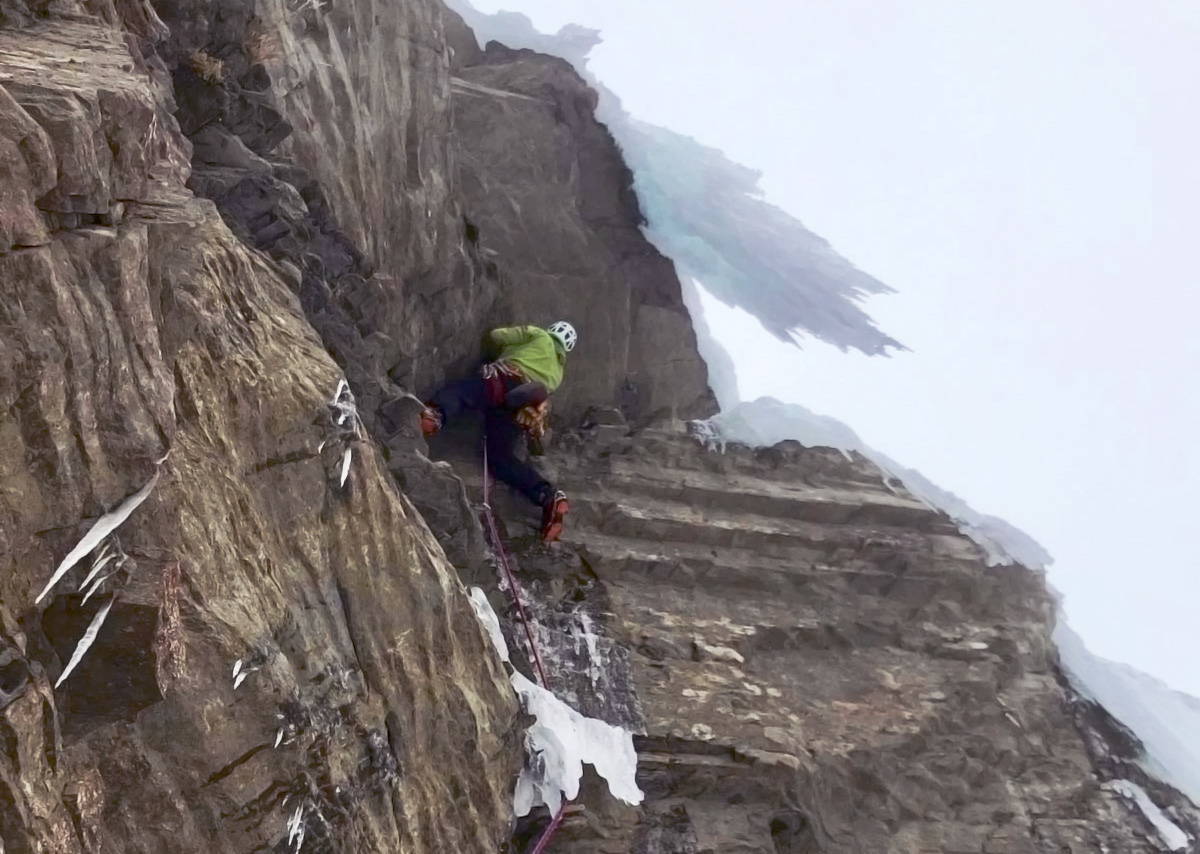
By Rob Powell
First Published in:
The Journal of the Mountain Club of South Africa
What are all these funky climbing grades about? Because humans like making things difficult, we have a variety of Alpine climbing grading systems applicable in the to different mediums and climbing styles. Let me try to explain. Alpine Climbing – This is based on the French system and has become the most common system used worldwide.
In a nutshell, it’s a severity scale. The grade can be supplemented with a ‘+’ to indicate a higher level of difficulty.
• F: Facile / Easy – Technically a doddle, may be on glaciated terrain which means a rope may be necessary. If not glaciated, most alpinists would climb this without a rope as it would be faster.
• PD: Peu Difficile / Little difficult – Mostly still a doddle but some sections may be exposed and have some moderate technical climbing. Some steep snow, 30-45o, and easy angled ice may be encountered. On PD ground, most alpinists would be ‘moving together’, i.e. moving continuously with-out belaying. Example: Gouter Route, Mont Blanc.
• AD: Assez Difficile / Quite difficult – Complex alpine terrain. AD routes are scary business and normally involve narrow exposed ridges, steep snow and ice slopes above 45o. Most likely this will require sections where belaying is necessary.
• D: Difficile / Difficult – Like an AD but scarier! Continuous difficulties. Steep ice and rock climbing. Experienced alpinists will likely climb rock sections in Alpine boots but less experienced parties may feel that rock shoes are more appropriate. You’ll need a pint after getting down.
• TD: Très Difficile / Very Difficult – Engaging! Do your research for this route. Long, complex route finding, highly crevassed, continuously steep, technical climbing, etc. You’ll need plenty beers and a visit to your therapist after getting down from this one.
• ED: Extrêmement Difficile / Extremely difficult – Bring spare underwear! ED climbs are grades upwards with numbers, i.e. ED1, ED2, etc. I’ve not seen many Alpine climbs graded more than ED2.
• ABO: Abominablement difficile / Abominably difficult – Difficulty and danger to their limit. Forget your rack, you won’t need it, there’s no placements anyway! Better idea is to stay at home and catch up on Netflix. Not many routes at this grade and if you open a new one, you’ll likely be up for a ‘Pioletd’Or’.
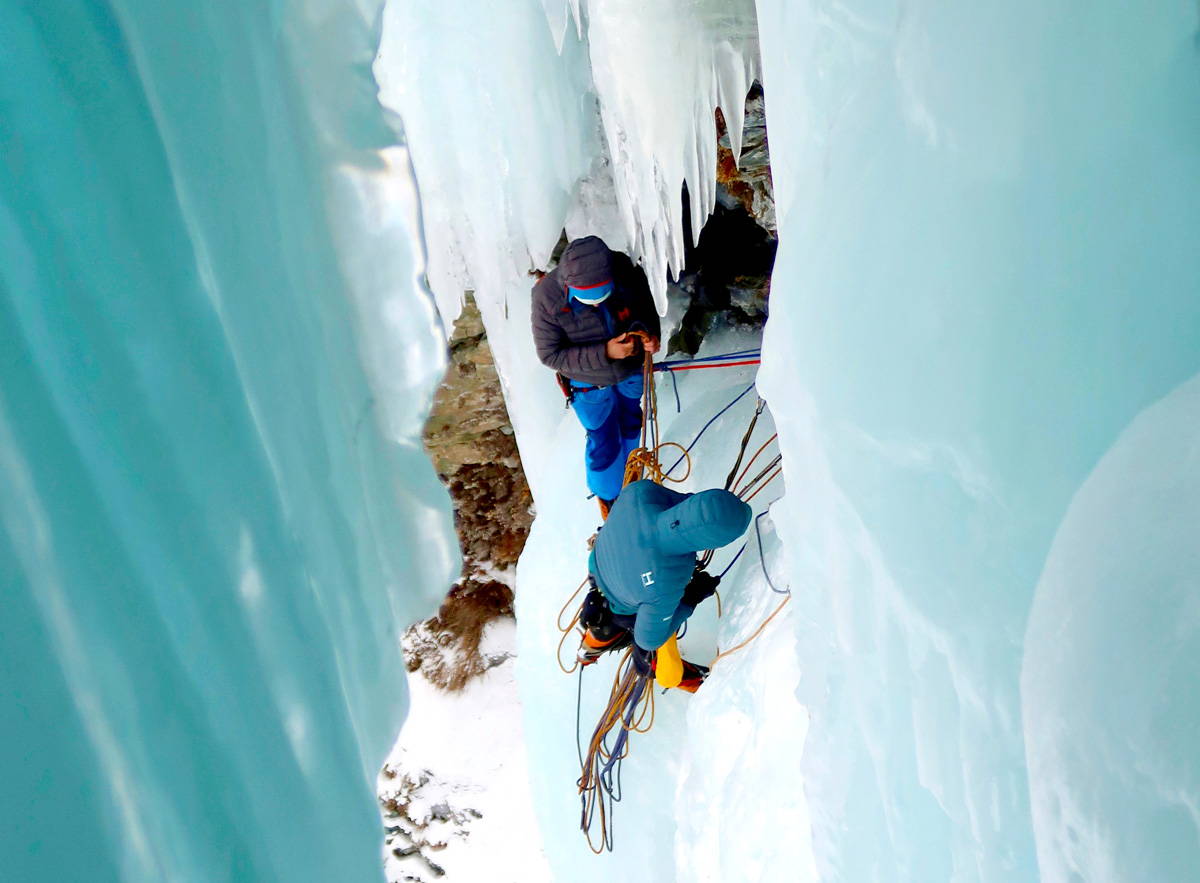
Ice-climbing Grades
This is a numeri-cal-based system and is used to describe technical and physical difficulty. The grades are generally internationally con-sistent, however, there may be minor variations from place to place. The prefix can be either AI, Alpine Ice, or WI,Water Ice. The grades are meant to be the same. However, in practice, Water Ice is harder and more time consuming. Alpine Ice tends to be ‘flatter’ and will often have some snow frozen into it.
This makes it less likely to shatter and more homogeneous to climb. Water Ice is essentially a frozen waterfall. The ice may be complex as it is formed by flowing water that freezes into pillars,curtains, icicles and an infinite number of weird shapes. It often breaks and requires ‘cleaning’ to get to the solid ice below. The grade can be supplemented with a ‘+’ to indicate a higher level of difficulty.
• WI1 / AI1 – Easy peasy. You’ll most likely be able to climb this without any ice tools. Your Tannie will be fine at this grade.
• WI2 / AI2 – Ice routes up to 60deg. Unless you are a professional cyclist, your calves will most likely get pumped as heck!
• WI3 / AI 3 – Moderate ice pitches with sustain sections of 70o, some steep sections up to 90o but these will be short-lived and rewarded right Hugh Thomas seconding a steep ice pitch on
Hydnefossen (WI5+/6), la year of winter climbing in scotland, norway and the alps with a rest. Sheeeuu!
• WI4 / AI4 – Continuous 80o ice or sections of steeper ice up to 90o but normally not longer than 6–8 m. At this grade the ice may be complex, forming large ‘cauliflowers’ or ‘scales’, and care may be required when climbing and placing ice screws. You may be forgiven for having a quiet prayer as your ice screws go through the ice into the pockets of air behind the scales.
• WI5 / AI5 – This is where ice climbing gets pumpy. Long vertical sections and complex ice will be encountered. Placing ice screws will be strenuous and the climbing very physical. You will be forgiven for praying out loud as you forge on unable to place any ice screws because you are too pumped to stop and hold onto your ice tools for the time it takes.
• WI6 / AI6 – Steep! Normally 90o but often overhanging sections. Very physical and pumpy. One could encounter delicate ice requiring ‘hooking’ techniques because normal ‘swinging’ may break the entire pillar and/or icicle to which you are clinging for dear life. You won’t be able to place ice screws as often as you’d like as you’ll get too pumped. It is normal to hear climbers crying for their ‘Mommy’ as panic sets in when they are far above their last ice screw and their arms feel like concrete.
• WI7 / AI7 – Technically the same as above but on this grade your pro-
tection will be worthless. Well, it might have a psychological benefit but that’s about it. No thanks! What better time to mention that ice climbing is dangerous business. Rule num-
ber one: do not fall. Imagine flying through the air with all these sharp steel things attached to you. You catch a crampon on the ice which flips you upside down and breaks your ankle/leg. Because your ice tools are attached with lanyards, you then get one ice tool in the face, the other in your tender region. Then your ice screw rips and you start all over again. I’m sure you get the picture.
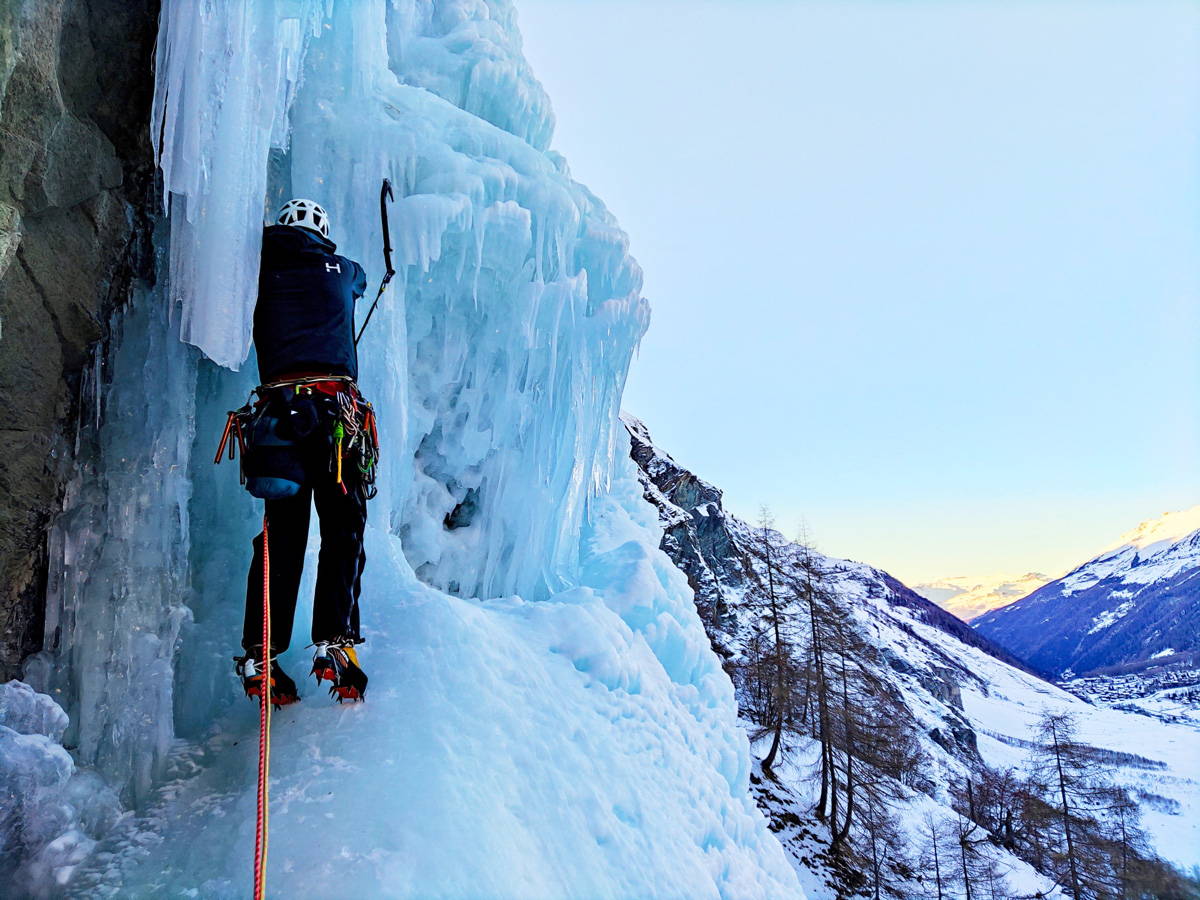
Mixed Grades – Based on the Ice-Climbing Grades above.
An M5 is supposed to be the same difficulty as a WI5 but in reality it is not. The mixed climbing
grade will feel easier, probably because the medium requires less ‘swinging’ and relies on secure placements in the rock (assuming you know how to make them). Drytooling Grades – Same as the mixed grades but with a ‘D’ in front. These routes are bolted and very steep. A D4/5 would be a ‘warm up’. D10 would be feel similar to a F7c / RSA 28. D15 is the hardest in the World. Scottish Grades – The Scottish system has a severity grade and a technical grade, not dissimilar to the UK Traditional grading system. The first part of the grade is a Roman numeral and the second an Arabic number. A Scottish V/5 would be comparable to a WI4 or M4. Scottish VI or VII route will be serious, highly technical, sustained and difficult. The technical difficulties will be comparable to WI5+/6 and M6. The main difference is that all Scottish routes are protected with trade gear and mixed routes in the Alps may have some bolt protection – dodgy Euro ethics.
